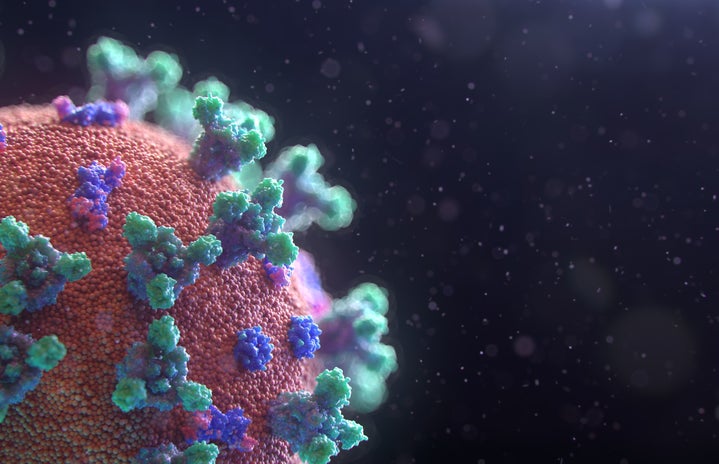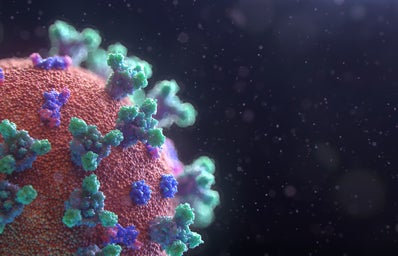Edited by Sreya Sayeed
what is CRISPR?
CRISPR is a recent gene-editing tool that stands for Cluster Regularly Interspaced Short Palindromic Repeats. The biotechnological advance is what allows geneticists and researchers in the healthcare and research realm to remove, add or alter our DNA sequence.1
CRISPR-Cas9 has 2 components. The first is Cas9, an enzyme that acts as scissors, cutting the DNA wherever there is a mutation – an abnormal sequence in the DNA. The second component is the RNA guide. This component of the CRISPR-Cas9 system binds to the DNA that is flawed and allows for the Cas9 to do the cutting. The cell then recognizes that the DNA is broken and works to repair it.1
The scientific community is always striving for successful therapeutic strategies and biotechnological expansion by looking for inspiration from other organisms. It is interesting that this system’s design was inspired by the already existing CRISPR mechanism in bacteria.1
Emmanuelle Charpentier and Jennifer Doudna founded and built the revolutionary CRISPR technology used today by recognizing this mechanism.2 Prior to CRISPR, gene editing was done by using chemicals or radiation to induce mutations in DNA.1 However, this method was not precise and was quite unpredictable. CRISPR on the other hand is fast, cheap, precise, and very reliable.
The implications:
The uses of CRISPR systems are limitless. Currently, they are being used to build new therapies for genetic diseases. For example, CRISPR therapy has been patented as successful in the fight against sickle-cell anemia. This genetic disorder affects millions around the world and is attributed to a mutation in the shape of red blood cells. This irregular cell shape disrupts blood cell circulation and causes clotting. However, CRISPR can edit the mutation which causes the abnormal cell shape and help the patients.3
CRISPR has also been tested for reducing the spread of malaria, engineering agriculture to withstand climate change, and for a range of diseases.3
Currently, there are clinical trials testing the uses of CRISPR for congenital blindness – Leber’s congenital amaurosis. This disease leads to vision loss and blindness and is due to 3 genes, but the ongoing trials are focussing on the mutation in the gene which leads to the most severe form of the disease. Additionally, there are possibilities for using CRISPR as a therapeutic strategy against neurological and muscular diseases. Another scope of CRISPR is the editing of DNA in cells that are involved in cancer to help reduce the symptoms or severity of cancer. For example, researchers used CRISPR to edit immune cells to fight off tumors with better efficiency.3
Thus, there is an endless amount of possibilities for CRISPR. Gene editing – since genes are the blueprint of our existence – is the best target for therapeutics.
What is the controversy?
Despite, the significantly positive implications of CRISPR, the technology has caused quite a buzz amongst the public. In 2018, scientist He Jiankui created the first genetically altered babies – twins Lulu and Nana. He used CRISPR to edit embryos and tried to modify the DNA to decrease the babies’ susceptibility to HIV – a virus present in their father. However, the scientist was later charged with illegal medical practices and furthermore, he had broken a plethora of ethical codes. He did not practice informed consent and his research lacked the publication of a formal report. Moreover, people were shaken up by the editing practice on an embryo.4
This and the uncertainty and lack of access to accurate knowledge regarding CRISPR paints this remarkable advance in a negative light. CRISPR and its successes should leave the presence of mere academia and enter the market of the common layman.
what now?
CRISPR has been proven time and time again to be very beneficial in genetic disease therapies. We as a society need to come to a consensus on what exactly is our priority and what the rapidly evolving biotechnology industry should focus on.
The infamous topic of using CRISPR and alike technology towards the future of designer babies should be reevaluated. Is this possible? Well, given the rapid speed of the field, it may be, however, there are many ethical and technological pushbacks for this development.
First of all, the common understanding is that a gene and the resulting trait reflected in a person occur in a linear, one-to-one relationship. However, genetics is far more complex than this. A person’s qualities and personality manifest as a result of their genes, environment, and epigenetic factors. To invest time in customizing a “designer baby” is futile.
Instead, the scientific community, as well as society should be hoping for CRISPR therapies for diseases such as cancer, cardiovascular diseases, neurological diseases – such as Alzheimer’s disease, Parkinson’s disease, diabetes, etc.
As a society, we need to understand how much promise is held in the hands of CRISPR for gene editing. As of right now, we should focus our desires and goals on bettering the life we have been given, rather than customizing a new one.
References:
1.webteam), www-core (S. (2022, February 8). What is CRISPR-Cas9? @yourgenome · Science website. Retrieved February 25, 2023, from https://www.yourgenome.org/facts/what-is-crispr-cas9/2
2.Gostimskaya, I. (2022). CRISPR–cas9: A history of its discovery and ethical considerations of its use in genome editing. Biochemistry (Moscow), 87(8), 777–788. https://doi.org/10.1134/s0006297922080090
3.Balch, B., & Writer, S. (2021, December 2). The future of CRISPR is now. AAMC. Retrieved February 25, 2023, from https://www.aamc.org/news-insights/future-crispr-now
4.Cyranoski, D. (2019). The CRISPR-baby scandal: What’s next for human gene-editing. Nature, 566(7745), 440–442. https://doi.org/10.1038/d41586-019-00673-1


